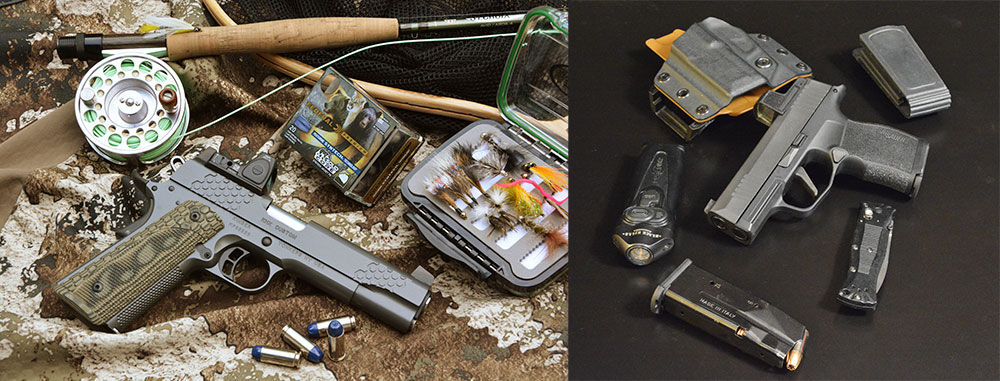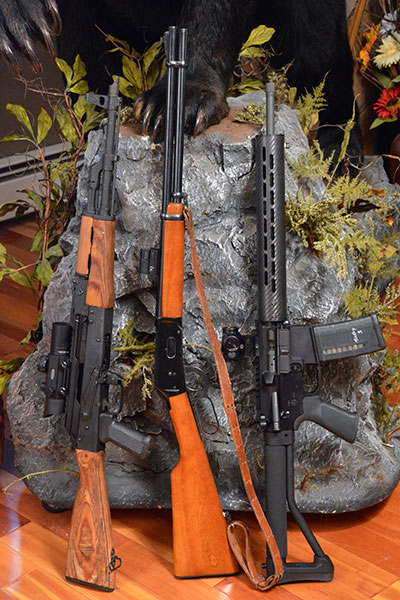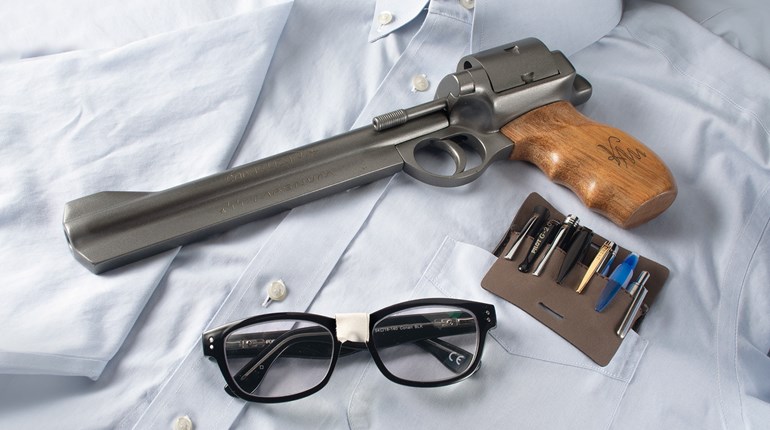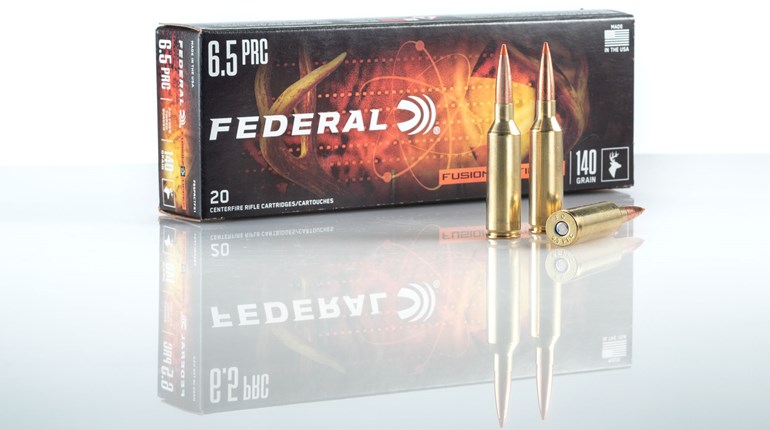
It has happened against my will and without my permission, but I got old. Parts of me did anyway. I first noticed it in my late 40s when I had trouble reading the headstamp on a cartridge. It’s called presbyopia and it refers to the loss of ability to see close objects or small print. Development of presbyopia is a normal process that happens slowly over a lifetime. Most people usually first notice it around age 40.
Once my arms got too short, I got reading glasses. I am lucky that, in my late 60s, Mart-Store glasses are still all I need for reading or doing gunsmithing. But, shooting was different. Pistol sights kind of ended up in “no-man’s land” in terms of distance from the eye.
I solved it for many years by getting prescription glasses that allowed my focus on the front sight. I borrowed a “blue” training gun from Smith & Wesson and brought it to my eye doctor. He is a bird hunter, so he understood—sort of—but his staff didn’t. Once we calmed them down and canceled the SWAT team, he measured my eyes and wrote the prescription. As I shoot handguns left-handed and long guns right-handed (it’s a long story), I had the correction only in the left side of the shooting glasses.
Then, over the years that aging thing advanced. I never told it that it could and it didn’t ask permission, it just did it. Years later, I found that seeing the sights in low-light conditions became quite difficult, even with the glasses. So, I put an Aimpoint Micro red-dot on my Smith & Wesson Model 22A for indoor bullseye shooting. What a difference it made.
I am not exactly a red-dot rube. Aimpoint introduced the first one in 1975, and shortly afterward I mounted one of them on my Ruger Super Blackhawk .44 Mag. I shot my first black bear and several whitetails with that handgun back when Reagan was running the ship. (Damn, I miss him.) I have used red-dot sights on rifles, pistols and handguns for hunting here, Europe and Africa.

I have recently put red-dot sights on a few rifles by using mounts from Skinner Sights or Turnbull Restorations, which fit in the rear-sight dovetail. This puts the sight a significant distance from the eye; red-dot reflex sights work great as they require no permanent modification to the rifle. I have some old classics that I have not used in a long time back in the game. I have red-dots on several AR- and AK-style rifles, including those I designated for self-defense. Nothing is faster for the first shot or for multiple targets with a rifle. In fact, red-dots let me get back to shooting my AK rifles, as the abomination they call iron sights on that platform are too small for my aging eyes.
Many of my serious hunting handguns wear red-dot sights. They are really the best choice. Traditional scopes have issues with eye relief and parallax that makes them difficult to use on a handgun. Iron sights are a relic from my youth unless I have my glasses on, which restrict normal vision and are a no-go for hunting. Red-dots are fast, accurate and work well with handguns, as they are not sensitive to eye relief.
Red-dots are not only on my serious, big-bore revolvers. I have them on several semi-automatic handguns as well, including a custom .357 SIG with a Trijicon RMR that I carry in a Kenai holster from Gunfighters, Inc. It’s my carry gun while fly fishing. For the record, the sight appears to be waterproof as it (and I) has fallen in the river more than once. It seems you get clumsy as you age, too.

This style of sights have long been a big part of my shooting, but not so much on competition, or more importantly, defensive handguns. For years, I didn’t think the technology was there yet for my carry gun. However, we are closing in on half a century of red dots in the marketplace, and a lot has changed. If anything, I am behind the curve here. Red-dots have become small and very reliable. Things have shifted, and red-dot sights on defensive handguns are on the way to becoming the norm.
I had tried shooting a few handgun matches in the past with red-dot-sighted handguns, but became so frustrated that I stopped using them. I practiced before the matches, but not enough. With the added stress of the match timer, things fell apart.
After shooting indoor bullseye during the winter, I made the decision to use only handguns equipped with red-dot sights for the next year. That forced me to work through the difficulties that had stalled me in the past from using the electronic sights on serious competition or carry guns.
There is a learning curve with the change to red-dot sights. At the range, I kept hearing from folks (who thought they were helping) about how it’s hard to acquire the dot on a handgun at speed. They weren’t lying. It should be instinctive to a long-time shooter, but it was not. It seemed like I had to hold the handgun at a much different angle to see the dot. It’s probably because the sight is higher over the bore than iron sights. I would punch the gun to the target and the dot was never there. I had to angle the gun so it seemed to me like I was shooting at the bottom of the target. After years of shooting with iron sights, it was a difficult transition. I have colleagues who insist that muscle memory is not a real thing, but it is and, in this case, it was working against me.
Still, I had committed myself to making it work. Some of the best shooters I know use red-dot-equipped handguns, so it’s not like I was plowing virgin ground. I have watched my friend Jerry Miculek do amazing things with a red-dot-sighted handgun. Clearly, the problems of the past were with me. By committing to using only red-dot handguns, I thereby forced myself to learn the system.

How did I do it? By fitting a Leupold DeltaPoint Pro to my SIG Sauer P320 X-Five handgun and designating that my “shooting gun” for the foreseeable future. I was running a Tuesday night pistol league at my local club that had diminished in numbers due to ammo cost and shortages. Fewer shooters opened some options to different drills. Those of us still there were all serious shooters, and I could set up complex and difficult scenarios. I am a Type-A competitive person and I didn’t like losing these makeshift matches to folks who had never beaten me before. But, the red-dot was proving difficult to master at first. It would have been easy enough to return to my custom 2011 with its iron sights and perfect trigger, but I stuck with my commitment. I did a lot of dry practice in my office.
It crept up on me rather slowly, until one day I realized I was shooting pretty well. Better, in fact, than I was before I switched to the red-dot. I started placing high in local matches and winning more than my share.

The red-dot sight allows me to keep my focus on the target, something I could never do with conventional sights. I simply look at the target and, when I correctly point the gun, the red dot is floating in my vision. It is simple enough to center it on the target and pull the trigger. This is a good safety tool in a carry gun, because you can focus on the bad guy the entire time. This means less chance of a misunderstood or missed movement.

I started shooting handguns at 18. I had fast reflexes and outstanding vision back then. So, to compare it to 67-year-old reflexes and eyes is not apples and oranges; it’s more like apples and mud-pies. But, I can say that I am faster now with a red-dot sight on my handgun than I have been in recent years with irons. Not just first on target, but during target transitions. I can now look for the next target without worrying about front-sight focus. Find the target and dot and fire. In years past I had to shift focus back to the front sight, or miss. It takes a fraction of a second, but that adds up. I felt confident enough shooting red-dots on my handguns that several months into the process, I made the leap to a defensive handgun with a red-dot.
Those of us of a certain age know too well about the wear and tear from the hazards of living an active life and how it takes a toll. My back no longer appreciates a heavy handgun on my belt all day. I looked for a lighter alternative for a carry gun. That search ended with acquiring a SIG Sauer X Series P365 fitted with one of its Romeo Zero red-dot sights. It has a built-in rear sight and the gun is fitted with an X-Ray3 night sight in front, so you can co-witness the irons with the optic. I know—it’s a 9 mm and if you read my articles you know in spite of the current fads, I am not a fan for defensive use. But, this gun is perfect in every other aspect. So, I dragged myself, kicking and screaming into the modern world of what I consider to be underpowered pistol cartridges.
Is it all fairy dust and unicorns? Not exactly. I have a slight astigmatism in my vision, which means I don’t see a round dot. I have found ways to accommodate so it’s not much of a problem for most shooting. The other thing is the red dot is not as precise. It’s a big dot that covers a lot of target, so it’s a factor in precision shooting when testing guns or ammo for accuracy.
Now, I have more shots in the X-Ring and I have tighter groups on the bullseye target with corrected vision, iron sights and good light. Red-dots allow me to keep shooting indoors (in low light) during our sadistically long Vermont winters. It cost me a few X-Ring hits, but so what? I am shooting, not at home wishing I was.
For every other use with a handgun, my aging eyes have found that a red dot has proven the better choice.






































